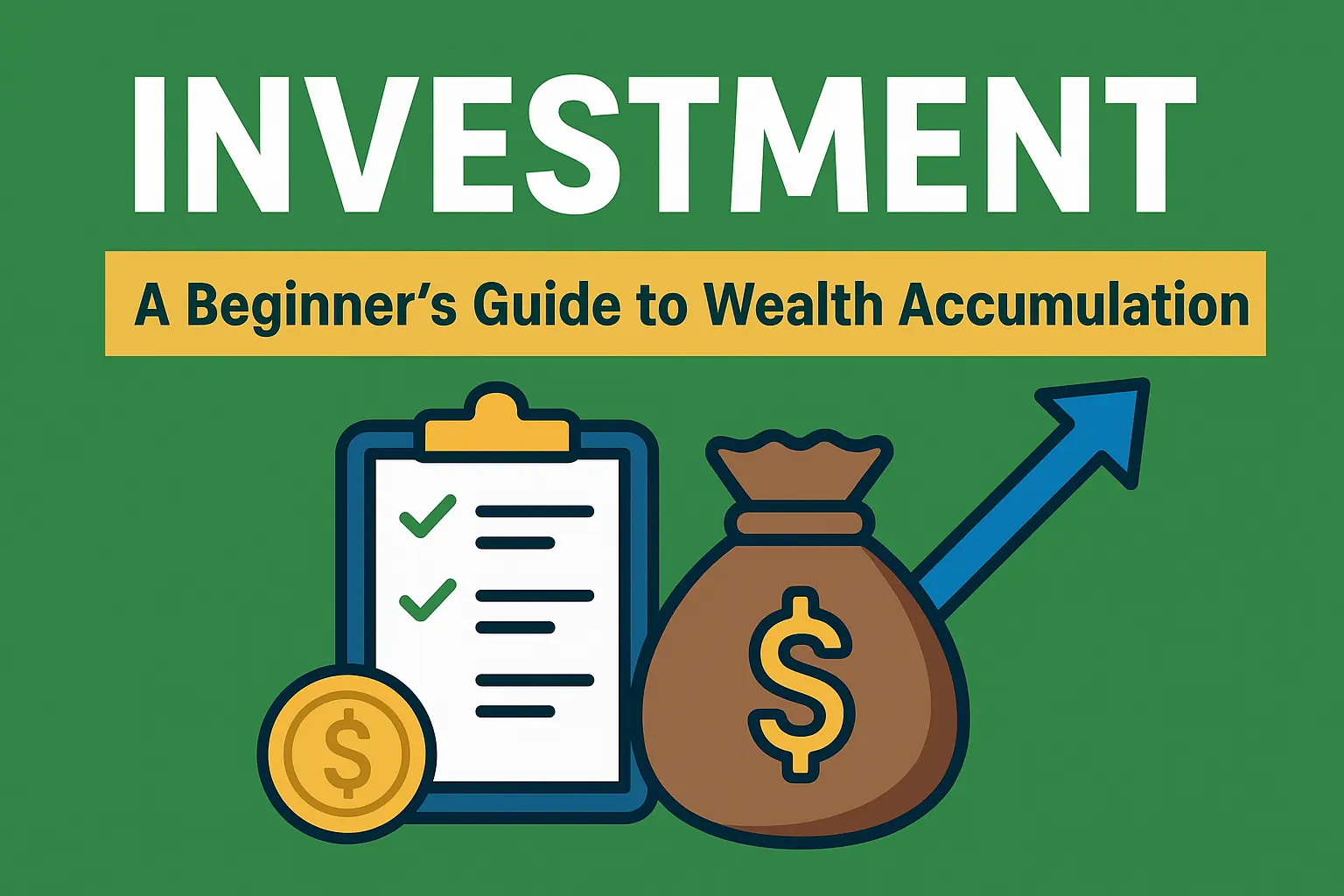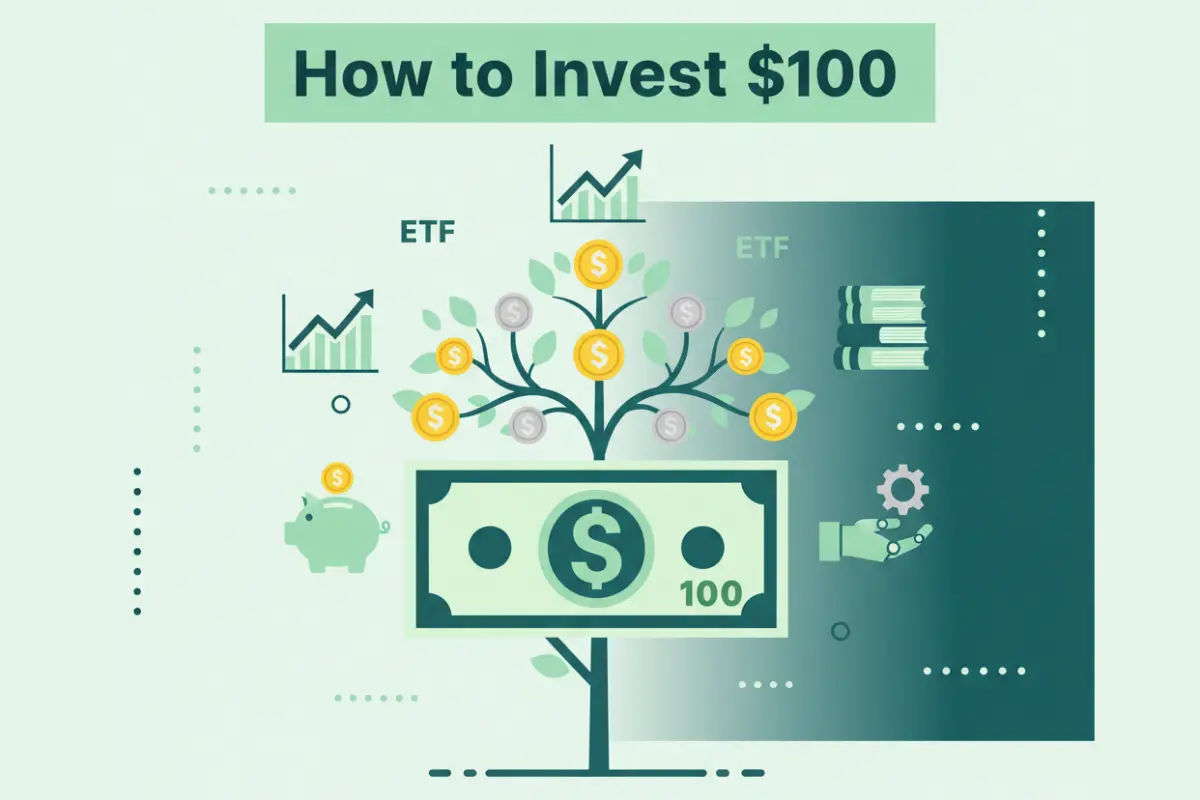Table of Contents
Investment & Investing Basics
Investing Basics
Investment means redirecting money from today’s spending to assets that can earn income or profit in the future—driving wealth accumulation through investment.
- Put money to work → potential returns over time
- Start early → time in market beats timing the market
- Match investments to goals & risk tolerance
Stocks
Ownership in a company; prices can move sharply.
- Dividends
- Capital gains
Traded on a stock exchange via brokerage firms & investing apps.
Bonds
IOUs from governments or companies; generally steadier.
- Coupon rate
- Maturity date
- Par value
Financial System
A network moving money from savers to borrowers.
- Financial intermediaries connect the two
- Banks, mutual funds, hedge funds, pension funds
Savings & loans
Pooled, diversified
High-risk strategies
Income for retirees
Diversification in Investment
Spread money across assets so one loss doesn’t sink the plan.
- Mix of stocks, bonds, funds, cash
- Reduces portfolio volatility
- Rebalance periodically
Simple vs Compound Interest
Simple interest (on principal only): A = P(1 + r t)
Compound interest (principal + accumulated interest): A = P(1 + r/n)n t
P=$10,000, r=5%, t=5y → Interest $2,500 → A=$12,500
P=$10,000, r=5%, n=12, t=5y → Interest $2,833.59 → A=$12,833.59
How to Start Investing
- Define goal & horizon (emergency fund first).
- Choose a regulated brokerage firm or fund platform.
- Begin with diversified funds; add stocks as you learn.
- Automate contributions; avoid timing the market.
- Review fees, taxes, and risk annually.
Quick Glossary
Marketplace to buy/sell shares
Profit paid to shareholders
Sell above/below cost
Bond amount repaid at maturity
Most people have heard that investment is one of the best ways to build long-term wealth. Simply put, investment is the act of redirecting resources from being consumed today so they can create benefits in the future. In other words, it is the use of assets to earn income or profit. The wealthiest individuals in the world achieved success through smart investing.
In this post, we’ll cover the investing basics, explore common types of investments like stocks and bonds, explain the role of the financial system, and highlight the importance of diversification in investment.
What is Investment?

Investment is the process of using money or resources today with the expectation of generating future income or profit. This helps in wealth accumulation through investment, allowing individuals to achieve financial independence over time.
Investing Basics
At its core, investing means putting money to work so it can grow. Instead of spending all income on current needs, part of it is set aside to generate future returns.
Common investment options include:
- Stocks and bonds
- Mutual funds
- Hedge funds
- Pension funds
Each comes with its own risk and reward balance.
Stocks and Bonds
Stocks
A stock represents ownership in a public company. While stocks can be risky due to price fluctuations, they also offer the potential for high rewards.
Stockholders can earn money through:
- Dividends – profit-sharing payments made periodically to shareholders.
- Capital Gains – profit earned by selling stocks at a higher price than the purchase cost.
The marketplace where stocks are bought and sold is called a stock exchange. Today, with the help of brokerage firms and mobile apps, anyone can access the stock market easily.
Bonds
A bond is essentially an IOU issued by a corporation or government. When you buy a bond, you lend money in exchange for repayment with interest.
Key components of bonds:
- Coupon Rate – the interest rate paid to the bondholder.
- Maturity Date – when the bond issuer must repay the bondholder.
- Par Value – the principal amount paid back at maturity.
Compared to stocks, bonds are generally more stable and suitable for conservative investors.
Role of the Financial System
For investment to work effectively, an economy needs a financial system—a network that enables the transfer of money between savers and borrowers.
Financial Intermediaries
Financial intermediaries connect savers and borrowers. They include:
- Banks – offering savings accounts and loans.
- Mutual Funds – pooling savings from individuals and investing in a mix of stocks and bonds.
- Hedge Funds – private investment organizations that use high-risk strategies.
- Pension Funds – providing retirement income funded by employers and invested for long-term growth.
Diversification in Investment
One of the best strategies for reducing risk is diversification in investment. By spreading money across different assets—such as stocks, bonds, and mutual funds—investors can protect themselves from market volatility.
It’s also important to start investing early. Time allows investments to grow through the power of compounding.
Simple Interest vs. Compound Interest
Simple Interest
- Calculated only on the principal amount.
- Formula: A = P(1 + rt)
- Example: Lending $10,000 at 5% simple interest for 5 years gives $2,500 in interest.
Compound Interest
- Calculated on both principal and accumulated interest.
- Formula: A = P(1 + r/n)^(nt)
- Example: Lending $10,000 at 5% compound interest compounded monthly for 5 years gives $2,833.59 in interest.
👉 This shows that compound interest is far more powerful than simple interest for long-term wealth building.
Balancing Risk and Reward
Every investment carries both risk and reward. In general, higher returns come with higher risks. That’s why investors must balance their portfolios between risky and stable investments.
Conclusion
Investment is one of the most effective tools for financial growth. By understanding the investing basics, leveraging the financial system and financial intermediaries, practicing diversification in investment, and taking advantage of compound interest, anyone can achieve long-term wealth.
The key is to start early, stay consistent, and balance risks with rewards for sustainable financial success.
-
How to Invest If You Have Only $100: Smart Beginner Strategies
Discover smart ways on how to invest $100. Learn beginner-friendly investment options, strategies, and FAQs for growing your small budget. Introduction Many people think you need thousands of dollars to start investing, but that’s far from the truth. If you’re wondering how to invest $100, you’ll be surprised to learn that this small amount can…
-
Post Office Savings Schemes ( POSA ) Apply Now
Post Office Savings Schemes Learn everything about Post Office Savings Schemes: types, interest rates, tax benefits, eligibility, and why they’re the safest investment choice. Introduction When it comes to choosing a safe investment, Post Office Savings Schemes have been one of the most trusted financial products in India for decades. Backed by the Government of…
-
List of Commercial Vehicle Finance Companies in India
Discover the top Vehicle Finance companies in India offering loans for trucks, buses, and commercial vehicles. Compare features and choose wisely. Introduction Financing plays a crucial role in the growth of the logistics, transport, and infrastructure sectors. For businesses in India, commercial vehicles such as trucks, buses, and construction equipment are the backbone of operations.…





1 thought on “Investment: A Beginner’s Guide to Wealth Accumulation”